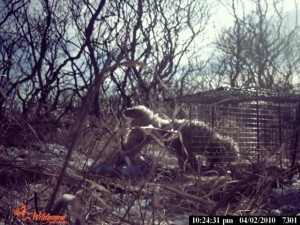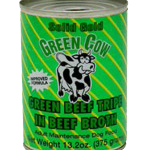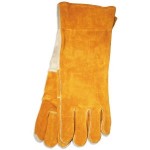We have been following the story of Toby, a shy lost Australian Shepherd who bolted from the sound of fireworks on July 4th. We hope we have given you some tips and ideas on how to effectively lure a shy, lost dog either back to where he went missing from or to a safe location where you can implement a plan to catch him. Remember, throughout the entire process, you should always keep your dog’s bed, smelly food, water and familiar-scented articles at the spot he went missing from – even if it is not his home. Many lost dogs do return on their own; so make it easy for him to find his way back.
This is the first of a few articles on humane trapping your lost dog. It is meant to be used for reference to help an owner whose dog is already coming reliably to a feeding station. If you aren’t at that point; please go back and read the previous articles first. We are going to begin at the end – what can go wrong, because it is important to understand the liability and seriousness of trapping BEFORE you begin.
Although humane trapping can be very successful it comes with a lot of risk and expense. If you are not prepared to commit to the process, don’t begin it. Come up with another strategy to find your dog.
Many owners want to rush out with a trap, throw it down on the ground, and expect POOF! their dog will be in it the next day. It is rarely that easy.
You MUST understand the risks. Remember: It’s a trap! It’s not a cage or a crate. The door comes down fast and hard and can injure or kill something that it strikes. Animals that are entrapped can panic and injure themselves. What all can go wrong?
- The lost dog can get injured or killed
- Neighborhood pets or children can get injured or killed
- Wildlife can get injured or killed
- Traps can get stolen or dogs can be stolen from the trap
- Owners or helpers can get bit resulting in costly medical bills and possibly the euthanization of the dog (if it is a foster dog owned by a shelter or rescue)
- Transporting large dog traps (4 to 6 feet long x 2 feet wide and high) can damage your vehicle or cause injury while lifting
How long does it take a trap to work? You may catch the dog in an hour. Or, it may take days, weeks or months. You won’t be able to trap in extreme weather conditions (heat or cold), so be prepared for lengthy delays; during which you must still replenish the feeding station and monitor the trail camera. Make sure you are prepared for the time, emotional and financial commitment involved with trapping.
You will need to check the trap several times a day. Ask yourself these questions:
- Do I have a reliable vehicle?
- Can I commit to the time required? Can I get time away from work and family commitments to check the trap several times a day?
- Can I afford to cover the cost of trap rental, gasoline, bait, bedding and other trapping supplies for several days, weeks or even a month or more?
- Can I afford to cover the cost to replace the trap if it is stolen or damaged? ($400 to $500 for a large dog trap )
- Do I have a support system in place if this turns into a long time endeavor?
- Do I have personal liability insurance and health insurance to cover myself if something goes wrong? Do the people helping me have insurance?
- Is trapping legal where you live? Check BEFORE you begin.
You MUST have a plan in place for when you catch your dog. Think this through beforehand. The worst thing that can happen is you trap your dog and as you are taking him out of the trap, he slips away again. You may never get a second chance to trap him. Traps must be transported with the dog inside to a safe, enclosed place – a garage or vet clinic is ideal. Ask yourself before you begin:
- What is my plan when my dog is in the trap?
- Where am I going to take the dog and trap?
- Do I have enough people to lift the trap and the dog into a vehicle? (Possibly more than 100 pounds) Do I have enough gloves for all of the helpers?
- Do I have a big enough car or truck to transport the trap and dog safely?
Thinking this through before you begin is imperative to success and your dog’s safety. Next we will talk about choosing the best style and size humane trap for the job. Part 10
Our tips, ideas and articles are based on information gathered from over thousands of successful lost dog recoveries. Any advice or suggestions made by Lost Dogs of Wisconsin/Lost Dogs Illinois is not paid-for professional advice and should be taken at owner’s discretion.

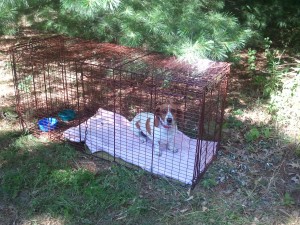
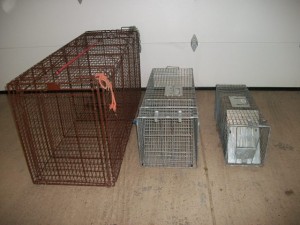
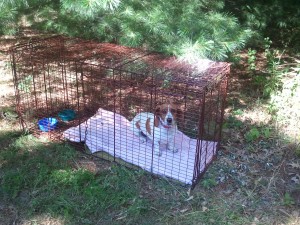
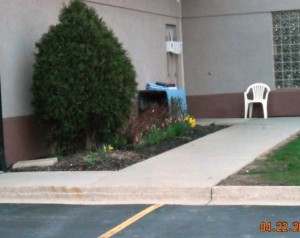
![covered-trap[1]](https://www.lostdogsillinois.org/wp-content/uploads/2012/07/covered-trap11-300x225.jpg)
